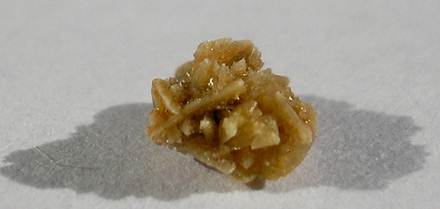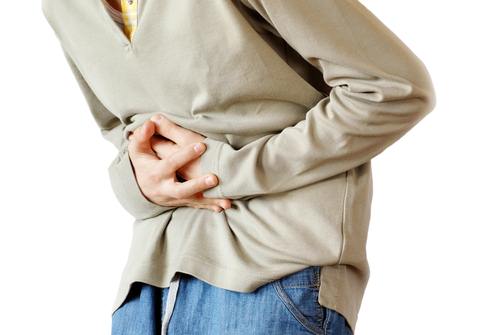
Pain is the most common symptom of kidney stones, and, unfortunately, it can be excruciating. Many women describe the pain of passing a kidney stone as “worse than childbirth,” notes Seth K. Bechis, MD, an assistant professor of urology at UC San Diego Health.
That said, the pain does vary from person to person, adds Dr. Bechis. If the stone does not cause a blockage as it moves through the urinary tract, a person may not experience any pain. Others may have pain in their back near the kidneys, which sit on either side of the spine below the rib cage, or in their lower abdomen or groin, he says.
Why Passing a Kidney Stone Can Be So Painful
Think of the urinary tract system as your body’s plumbing system, explains Timothy F. Lesser, MD, a urologist at Torrance Memorial Medical Center in Los Angeles. The kidney makes urine, which spills into the ureter, a tiny tube that transports the urine from the kidney down to the bladder. The bladder fills, then empties. “‘Passing a stone’ [denotes] a stone traveling from the kidney down to the bladder, and traversing the length of the ureter,” he says. The stone leaves the urinary tract through the urethra, the tube that transports urine outside the body from the bladder.
A stone passing is so painful because the kidney itself is “exquisitely sensitive,” explains Dr. Lesser. When a stone blocks the flow of urine through the urinary tract, backed-up urine can put pressure on the kidney, resulting in pain.
“It is thought that the kidney itself does not have nerves with classical pain fibers,” says John C. Lieske, MD, a consultant in the division of nephrology and hypertension at the Mayo Clinic in Rochester, Minnesota. But the tissue surrounding the kidney — called the capsule — does contain nerve fibers that transmit pain. Backed-up urine swells and expands the capsule, he says.
This swelling activates those nerve fibers, causing signals that are interpreted by the brain as an intense, visceral pain, says Prakash N. Maniam, MD, a urologist at the Medical Specialty Group at Poinciana in Kissimmee, Florida.
Stones can also be painful as they enter or are traveling down the ureter because the ureter spasms as it tries to push the stone along, says Dr. Lieske. (Ureters also contain nerves that register pain.)

What Kidney Stone Pain Feels Like — and Where You’ll Feel It
Not all kidney stone pain is the same. For example, the location of pain can change as the stone moves from the kidney to the bladder, says Lieske. When a stone is moving into the ureter, people may feel pain in their flank, or side, or their back, he says.
Notably, if the stone is stuck where the kidney connects to the ureter, the pain can be severe, says Ralph V. Clayman, MD, a professor in the department of urology at the University of California in Irvine. On a scale of 1 to 10, “pain can be a 10,” he says. “There is no position in which the person is comfortable.”
This type of pain has a tendency to come and go in 10- to 30-minute cycles. It can also radiate to the groin area and the front of the thigh, he adds.
Once the stone has moved down to the part of the ureter closer to the bladder, a person tends to have pain in the abdomen or groin, says Lieske. Men sometimes feel pain at the tip of their penis. (3)
As the stone moves down the ureter, it can also mimic the pain of other conditions, says Clayman. For example, if the kidney stone is on the right side of the body, it may feel like appendicitis, or inflammation of the appendix. If the stone is on the left side, people may mistake the pain for diverticulitis, inflammation, or an infection within the small or large intestine, he says.
And as the kidney stone migrates into the bladder, symptoms can be similar to a urinary tract infection, says Dr. Clayman. People may experience painful urination, along with frequent urination, and the urgent need to urinate, he adds.
Fortunately, from this point, the stone can usually pass from the bladder out the urethra, which is typically twice the diameter of the ureter, says Clayman.
What Makes Some Kidney Stones More Painful Than Others
Kidney stones can range from the size of a grain of sand to as big as a pea. Some are even as large as a Ping Pong ball.
Larger stones are less likely to pass and more likely to block the urinary tract, so they are generally more painful, says Lesser.
The size of the stone is not necessarily proportional to the degree of pain, adds Dr. Maniam. It’s possible for a large stone to remain in the kidney, not causing an obstruction or pain, and it’s possible for a small stone to pass without causing pain if it doesn’t create a blockage.
On the other hand, a person may have a small stone in the urinary tract that causes considerable pain because the ureter itself is so tiny, even a small stone can cause obstruction that creates an incredible amount of pain, Lesser notes.
How to Get Relief From Kidney Stone Pain
When pain does occur, it can be so severe that many patients have to go to the closest emergency room (ER) to seek immediate kidney disease treatments. Often a single dose of pain medication given by an ER doctor is enough to alleviate the pain for a prolonged period of time, allowing the stone to pass, says Lieske.
While narcotic pain medications can be carefully given for this purpose, studies suggest that nonsteroidal anti-inflammatory drugs (NSAIDs) — milder pain medications with fewer side effects — can be as effective. A review of 36 clinical trials that compared NSAIDs with stronger pain medications for kidney stone pain relief (published in the April 2018 issue of European Urology) found that NSAIDs were equivalent when it came to pain reduction and led to fewer side effects. (7)
Tamsulosin (a type of medication known as an alpha-blocker) is also widely used to help relax the muscles of the ureter, increasing the chance of passing the stone and helping reduce symptoms of pain, Bechis notes. However, new evidence suggests this medication may not add as much benefit as previously thought, he adds. A study published in July 2015 in the Lancet found that tamsulosin didn’t help stones pass.
How long does kidney stone pain last? It depends on how long it takes to pass the stone.
“It can take days to weeks to pass a stone, depending on the size and location,” says Maniam. Doctors can use imaging scans to see if the stone is moving, he adds, but “it is difficult to predict a time frame to passage.” Fortunately, treatments are available to remove the stone if necessary.
Source :- Everyday Health
Thanks for the helpful article!